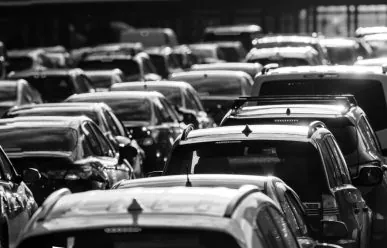Our highways, city and rural streets have never been more dangerous. Since the pandemic, driving behavior has changed across the United States as we are plagued with distracted driving, speeding, and a decrease in traffic enforcement.
On February 12, 2025, David Rouzer, a member of the U.S. House of Representatives and the Chairman of the Subcommittee on Highways and Transit, released opening remarks titled “America Builds: A Review of Programs to Address Roadway Safety” from a hearing about the Subcommittee’s efforts to improve highway safety through policy and program reviews within the Department of Transportation. Summarized below are the most important pieces of information from the hearing.
Driver behavior has changed considerably since the pandemic
The significant increase in traffic fatalities since the onset of the pandemic appears largely related to increased risks being taken by drivers. In an October 2021 report, the National Highway Traffic Safety Administration (NHTSA) found that “after the declaration of the public health emergency in March 2020, driving patterns and behaviors in the United States changed significantly. Of the drivers who remained on the roads, some engaged in riskier behavior, including speeding, failure to wear seat belts, and driving under the influence of alcohol or drugs.”
The National Highway Traffic Safety Administration (NHTSA) estimates that across the U.S.:
- Nearly 41,000 people died in motor vehicle related crashes in 2023, down 3.6 percent from 2022, but overall fatalities were still up compared to the last decade.
- After pandemic-era closures began in March of 2020, driving trips dropped by 60 percent and speeding risks increased by 64 percent.
- The risks increased as traffic enforcement declined after police officers held back from “nonessential” contact.
- In 2021, traffic fatalities jumped over 10 percent, the highest number since 2005 and the largest increase since 1975.
- In 2022, NHTSA found that 40 percent of all traffic fatalities occurred in rural areas on non-interstate roads, despite only 20 percent of the population living in rural areas.
In addition, almost 50 percent of Americans say that people in their area drive somewhat less safely or a lot less safely than before the pandemic. Seventy-eight percent of Americans also think that cellphone use is a major problem in their area, while 63 percent think speeding and aggressive driving are substantial issues. (Source: Pew Research Center).
What’s in the Committee’s Plan?
- Provide states and local governments flexibility to implement programs in our rural communities.
- Encourage states to develop Highway Safety Improvement Programs
- Adapt pavement and guardrail standards to new vehicle technology such as electric vehicles which weigh more than traditional vehicles.
- Address work zone safety which puts roadside workers at greater risk of injury or death. According to the Associated General Contractors of America, 64 percent of contractors reported a motor vehicle had crashed into their work zone since 2020.
Three Key Takeaways
- Post-pandemic driving levels are now back up to the pre-pandemic levels and with federal employees returning to work, the numbers will be higher.
- The new normal of post-pandemic driving habits put people at risk of severe injuries and death.
- Put down your cell phones and pay attention to the road.
What to Do After an Accident
If you or a loved one is in an auto accident, contact an experienced Personal Injury attorney. At Joseph Greenwald and Laake PA, we serve people in Maryland, the District of Columbia and Virginia.




